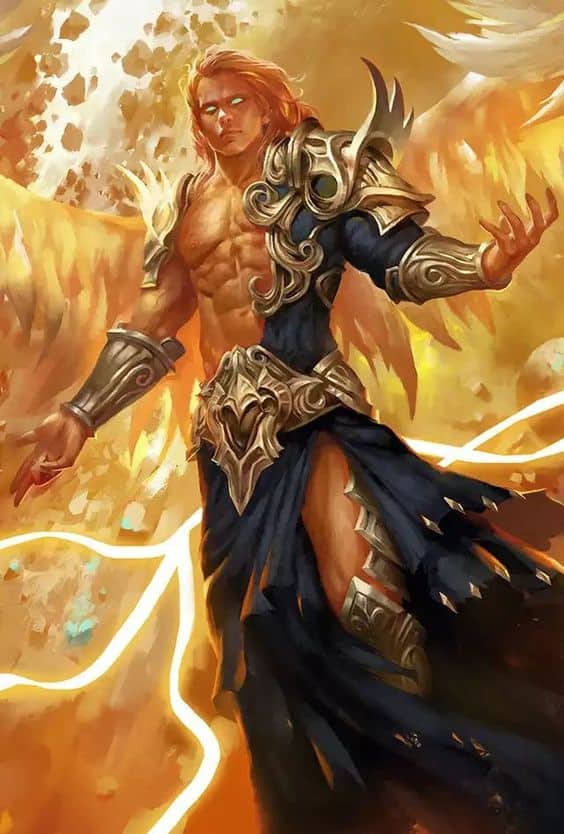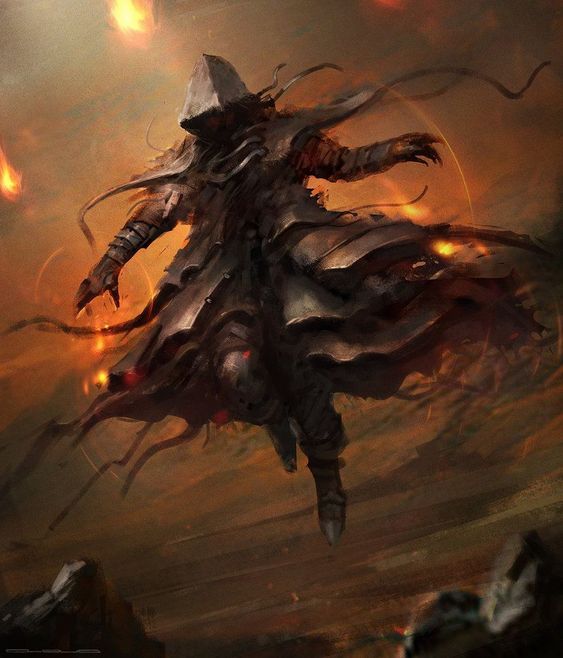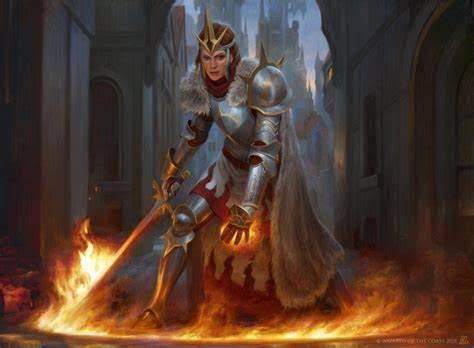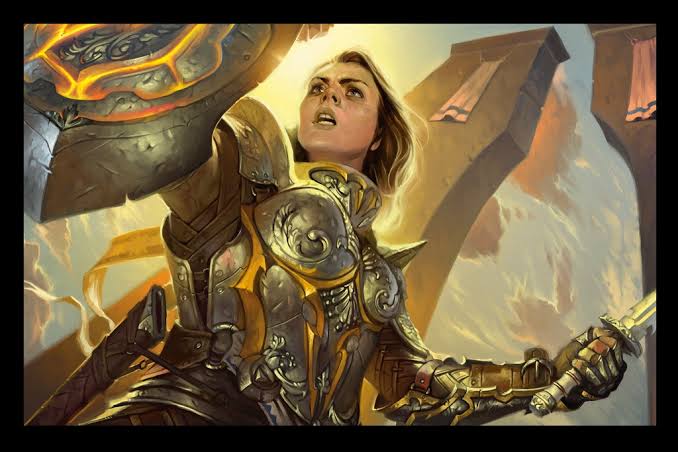D&D 5e: Divine Soul Sorcerer Guide

D&D 5e: Divine Soul Sorcerer Guide
Role in the Party
A robed figure stands amidst a battlefield of carnage. Robed, with matching hair and eyes of gold, a gesture forces the foe back, lighting the air with gouts of burning white fire. As the smoke clears, they turn their attention to the fallen, raising their arms and whispering a prayer of beneficence. Healing for those still alive, and safe passage to the afterlife for the fallen.
Sorcerers draw their powers from some kink in their bloodline. The Divine Soul, as the name suggests, is touched by the forces of the gods, good or ill.
Powerful spellcasters, Divine Soul Sorcerers are difficult to categorize, because they can truly be built to do it all, though never everything at once. This guide breaks down the subclass, including class abilities, feats, and skills, effective build paths, and multiclassing options, for maximum effectiveness.
Epic
Good
Meh
Bad
The Divine Soul Sorcerer subclass is found in Xanathar’s Guide to Everything. Click here to pick up your own copy of Xanathar’s Guide to Everything!
Divine Soul Features
Divine Magic: The Divine Soul draws their magical power from the same source as Clerics and other Divine casters. This manifests in two different ways.
Firstly, the character gains a bonus spell from the list below, based on the alignment chosen at character creation (all fluff, nothing to do with actual alignment.)
-
Cure Wounds: One of the two staple healing spells. Healing Word is better, but this is decent nonetheless.
-
Inflict Wounds: Mediocre damage, delivered in melee, where you absolutely don’t want to be. No thanks.
-
Bless: The best spell on this list. The best spell on many lists. A strong, multiple target buff that’s worth concentrating on even at high levels.
-
Bane: If the debuffs stick, this can be crippling, but it’s normally better to simply cast Bless instead.
-
Protection from Evil and Good: The reasons to cast this are limited enough that you could play a whole campaign and never need to, but when it happens, this is an incredibly powerful defensive buff.
But it’s the second part of this ability that is the main draw:
Whenever the character chooses a cantrip or spell, they can choose from the Sorcerer list, or freely choose from the Cleric spell list instead.
This is a ridiculously big deal.
There are very few characters that have access to two spell lists, and even when this happens, it’s normally just picking a couple of spells (the Bard’s magical secrets) or being able to take a very limited number of spell choices.
Having full access to two spell lists, one that’s heavier on blast and utility, and one that’s packed with buffs gives the Divine Soul a level of spellcasting power that other classes can only dream of. It also opens up Metamagic options that are normally almost impossible to run, because every spell chosen counts as a Sorcerer spell, so freely meshes with all levels of Metamagic.
The only downside is the number of spells known. The Divine Soul only knows 15 spells maximum. Choosing which to take from two entire spell lists can be daunting.
Our recommendation is to pick one or two roles to focus on and make spell and Metamagic choices around that. It’s normally far better in D&D (and life) to be good at one thing, rather than mediocre at several.
Favored by the Gods: If the character fails a saving throw or an attack roll, they can decide to just add 2d4 to the roll, which could potentially turn a failure into a success.
The ability can be used once, but refreshes on both long and short rests.
This is fantastic. Realistically, it should almost always be saved for saving throws, because failing a major save can take a character out of a fight for multiple turns if it doesn’t just result in their death.
Being able to use it after you see the roll is also a huge boon, especially because you should be able to judge roughly how much you failed. The average roll of 2d4 is 5, which is mathematically equivalent to Advantage, with a minimum floor of 2. Often, that small change can be the difference between failure and success.
Overall, a fantastic ability, well worth using whenever you can.
Empowered Healing: From level 6, the Divine Soul channels healing energies through its own body, improving the reliability of healing spells.
Once per turn, when the character or an ally within 5ft of them restores hit points using a spell, the Sorcerer can spend a Sorcery point to reroll any amount of those dice.
The opportunity cost is expensive, and in-combat healing is normally pretty inefficient. But the ability to shift a handful of 1s into something significantly better is a decent emergency button to have access to.
Angelic Form: From 14th level, the character can spend a bonus action to sprout wings, gaining a permanent 30ft fly speed, until they dismiss the wings (another bonus action) or die.
This is awesome. Constant flight is an incredibly powerful ability, especially for a primary spellcaster with low HP. The ability to dismiss the wings to go incognito is also handy to have. Nothing sticks out more in a crowded street than 20ft wide pitch black devil wings.
Unearthly Recovery: From 18th level, the Divine Soul Sorcerer can channel their divinity to heal from otherwise mortal wounds.
Once per day, as a bonus action, the character can choose to heal up to half their maximum HP total.
That’s a decent chunk of healing, and costs almost nothing in resources or action economy cost. The only reasons this stays green is because this comes so late in the game and because the Sorcerer’s HP totals are low, so the total, raw HP recovered just might not be enough.
Strengths
The Divine Soul Sorcerer is one of the most flexible Sorcerer subclasses because it can choose from almost twice as many spells as every other Sorcerer out there.
This offers the class a ridiculous amount of build variance. If you want to create a damage dealing menace, you can, supplemented with the holy fire of the Cleric.
Buffing is something the Divine Soul is exceptional at, combining the single target spells of the Sorcerer with wide ranging area buffing, and, importantly, healing spells, up to and including full resurrection, something the Sorcerer doesn’t usually have access to!
In the same vein, debuffing and area control is another thing this class can do well. Picking single enemies (or more, using things like the Twinned Spell Metamagic) to utterly disable using key spells, or locking down a large area of the battlefield with strong Auras.
The class abilities of the Divine Soul also really help with keeping the class casting. A bonus to saves or attack rolls helps to smooth over variance and eliminate bad rolls. More consistent healing is nice, but not the most useful thing on offer.
Constant, unrestricted flight, on the other hand, is one of the most powerful consistent effects in the game. As is just being able to heal a mass of HP for free once per day. If you get this far into the character, the later effects play into the whole angelic scion of magic feeling.
Overall, the Divine Soul can be built however you want it to be. Whether you want to directly deal with your enemies, empower your allies, or manipulate the battlefield, there are ways to do that here, and do it well.
Weaknesses
The biggest weakness with the Divine Soul is one that many Sorcerers face. And one that the game designers realized and moved to fix with later subclass options.
Lack of spell choices.
Sorcerers have plenty of spellcasting slots, as many as the other main casters. But they’re incredibly limited in spells known. While it’s true that the Divine Soul does offer a single bonus spell, it’s simply not enough.
This is almost purely because one of the biggest strengths of the Divine Soul; access to the Cleric spell list, makes it even harder to choose which spells to take. You’re choosing from not one, but two full spell lists.
Still, as problems go, this is a good one to have. It just adds a lot of planning and forethought to the class. You should pick one or two roles, and choose to excel at them, instead of spreading yourself too thin.
The subclass also offers nothing defensive, which, on a class that’s as easy to hurt as the Sorcerer, with the smallest hit die in the game, and no armor proficiencies, isn’t ideal. The Cleric list can go some way to fixing this, but it still means that close to enemies is a place the class does not want to be.
Best Race Options
Protector Aasimar: Great stats, twin damage resistances, once-per-day healing, a free cantrip, and a one use flight + bonus damage transformation is a great package. Without even mentioning the obvious thematic ties to the class.
Fairy: Flexible stats are great. So is constant, no-restriction flight (unless you somehow pick up medium or heavy armor from somewhere.)
Extra spells are also exceptional in a class that is spell starved. The cantrip is nice, Faerie Fire and Enlarge/Reduce are much better, especially since they can be cast again using spell slots.
Harengon: Flexible stats and proficiency in Perception are both lovely. A bonus to DEX saves, and the ability to bonus action bounce out of melee range is great too.
But the biggest boost here is a bonus to Initiative checks, so you can get that first turn and drop your biggest, most debilitating spells before the enemies even get to act.
Choosing the Right Skills
Sorcerers don’t have many skill proficiency slots, but there are several skill choices that the class can be very good at.
The high CHA of the class naturally pushes them towards being an effective Face of the group, handling social encounters for the entire party. Persuasion is the most important social skill, closely followed by Deception, especially important for campaigns with a spying or criminal focus.
Perception is the most used skill in the game, even if it’s not one that the character is usually the best at. Stealth is also nice to have as an option unless you want to spend one of your limited slots on magical ways to handle it.
One or two Knowledge skills are also great to have. Religion makes sense, and Arcana handles all of the spellcasting and magical beasties.
Fitting Feats
Inspiring Leader: Nothing slows down the Sorcerer’s ability to keep casting spells more than a critical lack of HP.
Inspiring Leader hands out a ton of temporary HP to you and your party members. The benefits scale with level and CHA, (which is perfect for you) and can be refreshed multiple times per day. This is a feat that saves parties. If you have the space in your build, it’s highly recommended.
Metamagic Adept: Metamagic is a class defining ability for the Sorcerer, but they can only take 2 choices until level 10. Fitting in a third can massively increase the flexibility of a build, and having bonus Sorcery points, and more resources, to fuel them is never a bad thing.
Telekinetic: There’s nothing in the Sorcerer base kit that uses your bonus action, and only a pair of late game abilities in the Divine Soul kit that might be used once or twice a day.
So picking up a free cantrip and the ability to move friends and enemies with your bonus action is a good deal. It’s not a lot of movement, but often, 5ft is all you need to get to safety.
Optimal Backgrounds
Criminal: Two good skills that mesh with expected stats, as well as a gaming set, and most importantly, Thief’s Tools.
Courtier: Two languages and two social skills let the character handle all the needed social matters.
Guild Artisan: Two social skills and a language are awesome Face options, and Artisan’s Tools add a little flavor, and might just come up, too.
Multiclassing Options
Hexblade Warlock: One level in Hexblade goes a long way to fixing the durability issues of the Sorcerer. Access to medium armor and shields pushes up the average AC of the character by 4 points, without having to invest any resources.
Access to the Warlock spell list also offers standouts like Hex, Armor of Agathys, and of course, the Eldritch Blast cantrip. Take one level. Maybe two for Invocations to increase EB damage, then level Sorcerer to the finish.
Watcher Paladin: The Sorcerer/Paladin is a multiclass combo that’s well known and widely regarded as incredibly powerful.
The main draws here are access to the heaviest armor and weapons, plus a fighting style, both increasing character durability. But we mainly want Smite, which burns spell slots to massively boost melee damage. The build can even cast a spell in the same turn if it takes and uses the Quicken Metamagic.
The Watcher subclass offers yet another defensive layer, a channel divinity that gives Advantage on all mental stat saves. Take 2 levels for Smite, or 5 levels for Extra Attack, then never look back.
Lore Bard: The Sorcerer can already increase the chances of its spells and ability succeeding with Metamagic and other options. Taking a few levels in Lore Bard can extend that ability out to the rest of the party.
Cutting Words is an ability so strong that it skews Bardic subclass choices, even 8 years after release. Directly subtracting from an enemy’s saving throws can near-guarantee certain abilities going off. The Wizard’s spells, the Battle Master Fighter’s maneuvers. Even your own spells. If you absolutely need something to stick, you can Heighten it, then use Cutting Words on the target for an almost guaranteed success.
Would I recommend playing a Divine Soul Sorcerer?
Absolutely. The Divine Soul Sorcerer is a subclass that starts strong, and simply doesn’t let up. Even when its subclass abilities feel slightly mediocre (Empowered Healing, we’re looking at you) that doesn’t matter because every level brings more spells known.
And that means tons more spellcasting options, all backed up with the Standard Sorcerer Package of Metamagic to shift and twist your spells beyond their standard uses. As we’ve said in this guide multiple times, the Divine Soul is probably the most flexible Sorcerer subclass there is, as well as being full of flavor. If you have a build idea in mind, this subclass is almost always going to be a great place to start.









